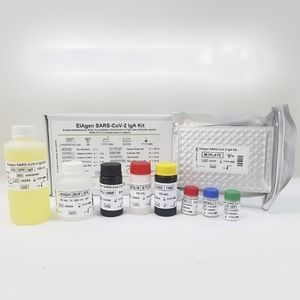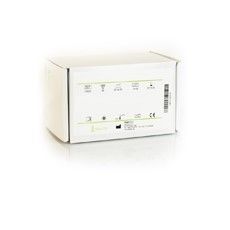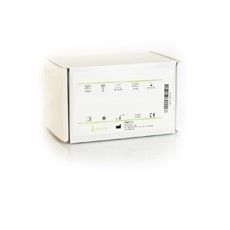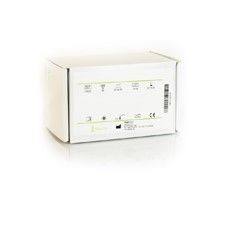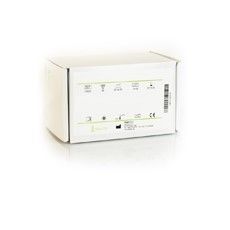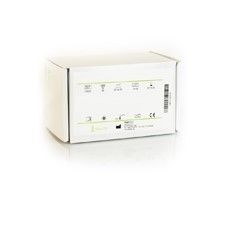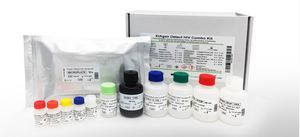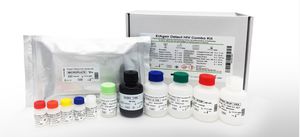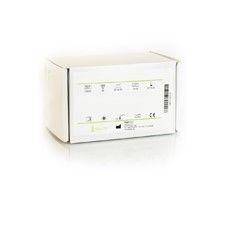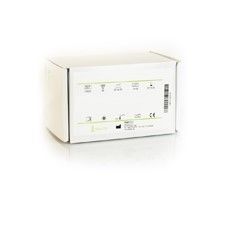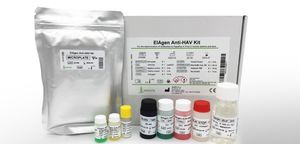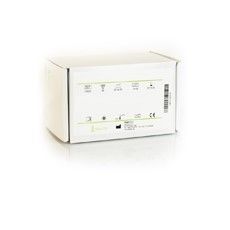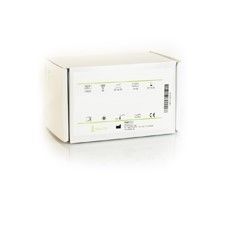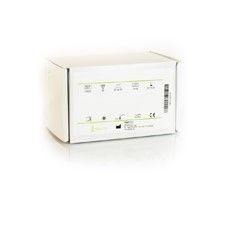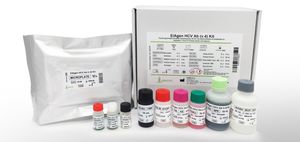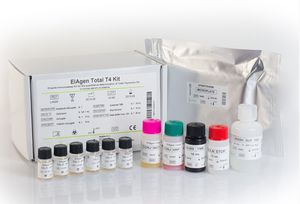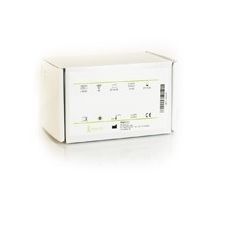
Respiratory disease test kit EIAgenIgGSARS-COV-2coronavirus
Add to favorites
Compare this product
fo_shop_gate_exact_title
Characteristics
- Applications
- for respiratory diseases
- Tested parameter
- IgG
- Micro-organism
- SARS-COV-2, coronavirus, MERS-CoV
- Sample type
- blood, serum, plasma, cell
- Analysis mode
- ELISA
- Specificity
95 %, 99.5 %
- Sensitivity
95 %
Description
Enzyme Linked Immunosorbent Assay (ELISA) for the quantitative detection of IgG antibodies to SARS-CoV-2in human serum or plasma. It is intended for evaluating the immune response of patients suspected to be infected by SARS-CoV-2, for seroepidemiologic studies and as an aid in the diagnosis of Coronavirus disease 2019 (COVID-19). Positive results can help to qualifypeople to donate blood that can be used to manufacture convalescent plasma for those who are seriously ill from COVID-19. The serological test will be used for the monitoring of the immunological response upon vaccination (when available). For “in vitro” diagnostic use only.
Introduction
SARS-CoV-2 is a new strain of Coronavirus that was first identified during an outbreak in Wuhan, China, in December 2019. Coronaviruses are a large family of viruses that cause illness ranging from the common cold to more severe diseases such as Middle East Respiratory Syndrome (MERS-CoV) and Severe Acute Respiratory Syndrome (SARS-CoV). Coronaviruses are named for their crown-like appearance when imaged. The large, type I transmembrane spike glycoprotein accounts for this notable feature. It is a heavily-glycosylated, cell-surface protein which is thought to mediate viral entry into susceptible cells. This spike glycoprotein, called ‘S’, is trimeric in structure. In addition to the S protein, there are three other structural base proteins: the envelope, membrane, and nucleocapsid. The S protein has two distinct functional domains, termed S1 and S2, both of which are necessary for a Coronavirus to successfully enter a cell.SARS-CoV-2 is the ethiological agent of COVID-19 respiratory disease.
Related Searches
- Assay kit
- Solution reagent kit
- Blood assay kit
- Molecular biology reagent kit
- Serum assay kit
- Immunoassay assay kit
- Plasma assay kit
- Infectious disease detection kit
- Diagnostic reagent kit
- Molecular test kit
- Whole blood detection kit
- Respiratory infection test kit
- Optical assay kit
- Clinical assay kit
- Dye reagent
- Fluorescence assay kit
- ELISA assay kit
- Buffer solution reagent kit
- COVID-19 detection kit
- Real-time PCR test kit
*Prices are pre-tax. They exclude delivery charges and customs duties and do not include additional charges for installation or activation options. Prices are indicative only and may vary by country, with changes to the cost of raw materials and exchange rates.





